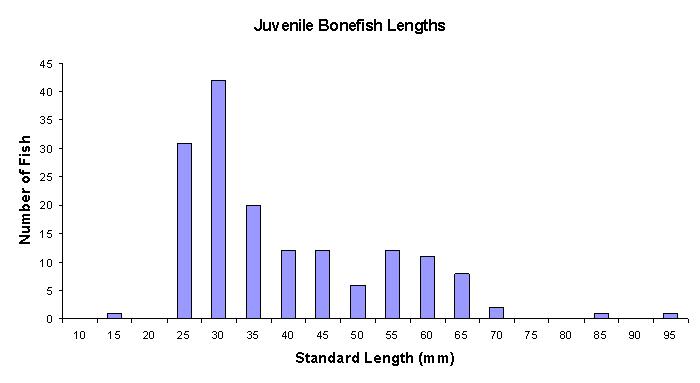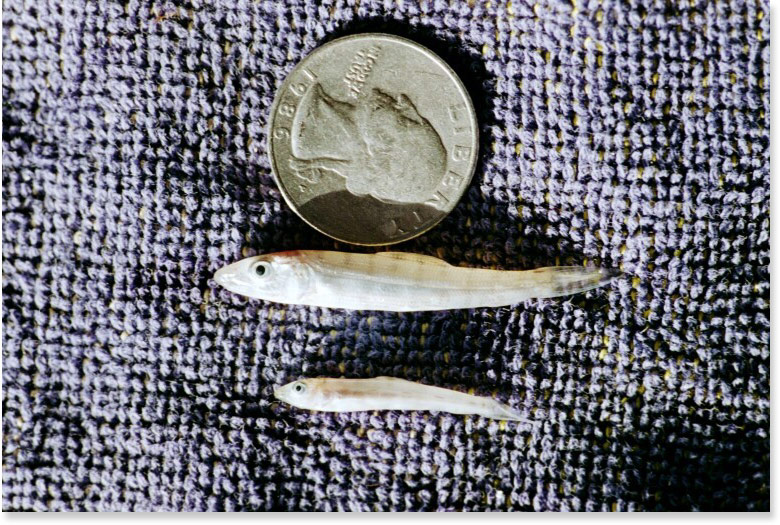
Like many marine species, bonefish have complex life histories, and use different habitats during their larval, juvenile, and adult life stages. Although we have enough information to paint a general picture of their life histories, we lack the specifics needed for effective conservation and management. Research in the 1990s revealed that bonefish in the Florida Keys spawn from November through May in deeper water outside the typical recreational fishing grounds. Once the eggs hatch, the bonefish larvae (called leptocephalus) remain afloat in the open ocean as plankton for between 41 and 71 days. These leptocephalus are clear and ribbon-like and migrate into shallow coastal habitats during nights near the new moon. They then undergo a metamorphosis into miniature versions of the bonefish anglers pursue on the flats. The abundance of adult bonefish is in part dependent upon success in the early parts of the bonefish life cycle. Where bonefish spawn effects where the larvae are transported by currents, and the larval travels effect where we find juveniles. All of these aspects of their life cycle are intricately connected to those adults pursued on the flats. Research in the Florida Keys began in November, 2003, with extensive reconnaissance and sampling of coastal habitats from Biscayne National Park to Key West. The Keys were divided into Upper, Middle, and Lower portions, and are now being sampled with seine nets and cast nets every other month. Within each section, mangrove, beachrock, and beach shorelines are sampled on the Atlantic and Florida Bay sides of the Keys, and backwater areas on the Florida Bay side. Multiple habitats are being sampled to allow us to compare abundances among the different habitats juvenile bonefish have available. To date, over 300 juvenile bonefish have been captured, almost all less than three inches long. All juvenile bonefish have been captured along medium energy sandy beaches – sandy beaches with seagrass approximately twenty feet off the beach. The majority of juveniles captured in our study are from the months of April and May, whereas in previous research they were captured from November through March. An interesting aspect of conducting research of bonefish in Florida is that there are two species of bonefish: Albula vulpes (the species we normally think of) and Albula species B (smaller, matures at a smaller size). Unfortunately, it is nearly impossible to tell these two species apart – especially when they are small juveniles. We are sending to FMRI tissue samples from juvenile bonefish for genetic analysis to determine which species is (are) being caught.
*This research is being funded by grants from Bonefish and Tarpon Unlimited and National Fish and Wildlife Foundation.


